Top best varieties of cherries for Central Russia
Cherry is a capricious crop, so gardeners in central Russia often hesitate to plant this heat-loving plant. And completely in vain. Over the selection of the oldest variety of cherry scientists have been working for many decades, and choosing a suitable variety for a temperate or temperate continental climate is not a problem.
Requirements for choosing a variety
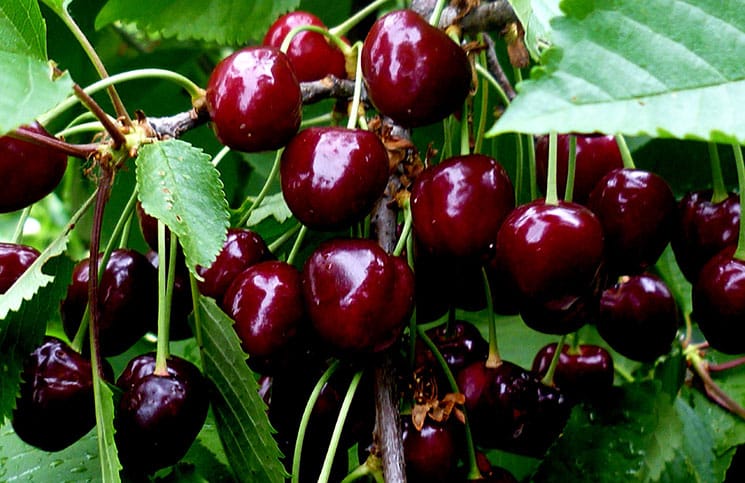
A gardener who decides to grow sweet berries focuses on the characteristics of the crops intended for the region. The main characteristics of cherry varieties for central Russia: frost resistance, short stature, late flowering.
Important! Since most trees are self-sterile, pollinating neighbors are planted next to them.
A selection of the best varieties
Gardeners of the Moscow region, Leningrad region, Volga region and other regions of the center of the European part of Russia give preference to selective seedlings bred specifically for the continental climate. The best 10 varieties that performed well in the middle zone were included in our selection.
Fatezh
This cherry has been included in the State Register of Breeding Achievements since 2001. She was bred at the Moscow All-Russian Selection and Technological Institute of Horticulture and Nursery Growing.
The variety is mid-early, the tree is low with a wide spreading crown. It begins to bear fruit at the 5th year of life. The berries are red with light pink, sweet and sour pulp, weighing about 4.2–4.6 g. Tasting score: 4.7 points out of 5.Fatezh tolerates Moscow winters well and is resistant to fungal infections. Self-sterile, requires pollinating plants.
And the way
Back in Soviet times, breeders from Mytishchi developed this variety, perfectly adapted to the conditions of the Central and Central Black Earth regions. Iput is an early ripening crop. The tree is tall with a pyramidal crown. The first harvests are produced 4-5 years after planting.
The berries are large, dark red, weighing 6.2–6.5 g. The pulp is intense carmine color, juicy and tender, with a high sugar content (11.7%). The plant is winter-hardy, almost susceptible to diseases and pests, partly self-fertile, and therefore requires a pollinator.
Tyutchevka
Mytishchi breeders also developed this variety, so beloved by gardeners. It was included in the State Register in 2001.
Tyutchevka belongs to low mid-late crops, partially self-fertile. It grows quickly, forms a spreading crown in the shape of a ball. The berries are dark red inside and out, medium in size and very sweet. Taster rating: 4.9 points out of 5. The variety produces high yields: up to 30 kg per tree, the transportability of the fruit is excellent. For this feature, the plant is widely used by agricultural producers.
Revna
A mid-late variety with increased resistance to frost and immunity to coccomycosis. High-yielding (up to 40 kg per tree) and partially self-fertile cultivar. The berries are medium-sized, flattened, weighing 4.7 g. The skin is dense, almost black, the flesh is sweet, juicy, dark red.
Vasilisa
This plant, bred by Ukrainian specialists based on the Donetskaya Krasavitsa and Donetskaya Ugolok varieties, is not included in the domestic register.
In central Russia, Vasilisa is actively grown due to its high taste and large fruit (one berry weighs 11–14 g). The tree is low with a spreading crown, the fruits are bright red with very juicy pulp. Frost resistance down to -25°C.
Bryansk pink
This is the latest ripening cherry: when other varieties have already faded away, Bryansk pink is just beginning to bear fruit. High resistance to frost and fungal diseases make it a favorite of gardeners. The plant is self-sterile and requires a pollinator.
The tree grows up to 4 m, forming a pyramidal spreading crown. The berries are medium-sized, round, the skin is pink with small specks. The pulp is pale yellow, sweet, juicy.
Ovstuzhenka
A medium-early productive cultivar, it begins to bear fruit 5 years after planting. Partially self-fertile, so it is better to plant other varieties nearby.
Healthy! Tyutchevka, Revna, Iput are suitable as pollinators.
Forms a low tree with a dense spherical crown. The berries are dark red oval. The pulp is purple and very sweet (taste rating: 4.7 points). Ovstuzhenka is winter-hardy, moderately resistant to coccomycosis.
Lena
Late-ripening variety, forms a tree of medium height with a pyramidal crown. Productivity is average (25–30 kg per tree). The berries are black with bright red pulp and dark juice. Average weight - 6 g. Taste is sweet and sour, taster rating - 4.7 points.
Lena is resistant to fungal infections. Increased winter hardiness allows you to grow it in the Urals and Western Siberia.
Gift from Ryazan
Large-fruited cherry of medium ripening period. Forms a low tree with a wide spreading crown. The berries are large (average weight - 7 g) yellow. The pulp is light yellow, juicy, sweet. The juice is colorless.
The gift of Ryazan is winter-hardy, almost not susceptible to diseases and pests. Does not require pollinating neighbors.
Sinyavskaya
One of the youngest varieties, included in the State Register in 2013. The cherry is mid-early and grows low with a wide pyramidal dense crown. The berries are dark red with juicy scarlet pulp. Increased sugar content (up to 13% per 100 g of berries). The cultivar is winter-hardy and not susceptible to most diseases. It is weakly affected by pests.
Reference! The choice of variety depends not only on the characteristics of the plant, but also on the taste preferences of the gardener. Some people prefer sweet and large black berries, others like tender yellow ones with a slight sourness.
Early varieties for central Russia
Such plants tolerate spring frosts, produce high yields, and are resistant to diseases. Their berries are juicier and sweeter than those of other crops. The disadvantage is that they are self-sterile, so they are surrounded by pollinators.
Chermashnaya
The tree grows up to 5 m, develops quickly, and begins to bear fruit in 4-5 years. The crown is oval or spherical. The berries are yellow with a pink side and medium-sized. Juicy aromatic pulp with slight sourness. The fruits ripen by the end of June. Sweet cherries are resistant to frost, diseases and pests, and require the presence of pollinating varieties.
Homestead
The tree takes a long time to develop and bears fruit in 5-6 years. Forms a rounded, highly thickened crown. The height of cherries is up to 5 m. The berries are yellow with delicate creamy pulp, juicy and sweet. Homestead is resistant to frost and pests. With high humidity, the berries crack and are damaged by wasps. The crop bears fruit at the end of June and requires pollinators.
Mayskaya
The variety has the earliest ripening periods: late May - early June.The berries are red, smaller than average in size, sweet with a slight sourness. Dessert cherries are not used for canning. It begins to bear fruit in the 4th year; the tree is medium-sized with a wide crown.
Reference! Early varieties are vulnerable to return frosts. Sometimes gardeners do not have time to enjoy the flowering when the tree falls off without forming ovaries.
Average
Mid-ripening varieties of cherries are characterized by high frost resistance, good yield, and are suitable for long-term storage. The disadvantage is that it is demanding on the landing site. They are grown in well-sunny areas with moderate soil and air humidity.
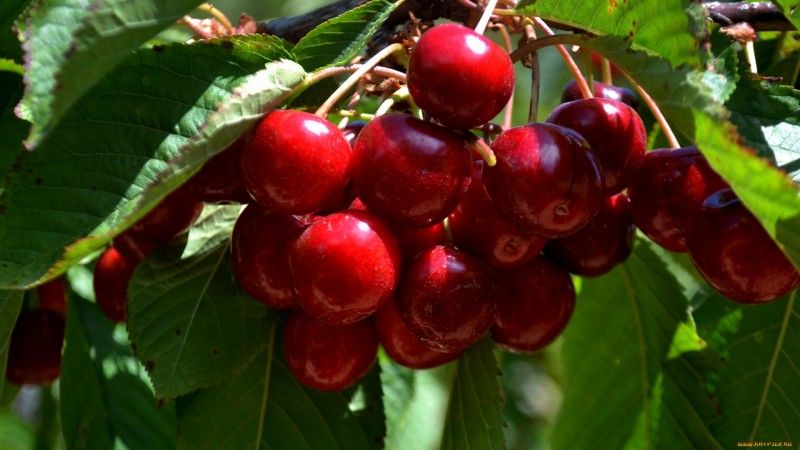
Bull's heart
One of the largest-fruited varieties. The weight of the berries reaches 10 g. High-yielding: produces up to 40 kg per season. Fruits together. The berries are almost black in color with bright red juicy sweet pulp. Unsuitable for transportation and long-term storage. Frost resistance is high, the plant is practically not affected by diseases and pests. The berries ripen by mid-July.
Rechitsa
The tree is medium-sized and fast-growing. Forms a pyramidal crown with medium dense foliage. Fruits from 5 years, winter-hardy, not susceptible to coccomycosis. Self-sterile, requires nearby pollinators.
The berries are juicy, sweet (score - 4.5 points), almost black, weigh up to 5 g. The fruits are universally used, well suited for compotes.
General's
Ripens by mid-July, yield is up to 50 kg. The tree is tall and strong with a wide spreading crown. Resistant to frost, diseases and pests.
The berries are fleshy, large, juicy and sweet. The skin is pale yellow with a pink side. General cherry is self-sterile, so pollinators are planted next to it.
Late
Such plants bear fruit from mid-July to the end of August.The berries tolerate transportation well and are suitable for preservation and storage.
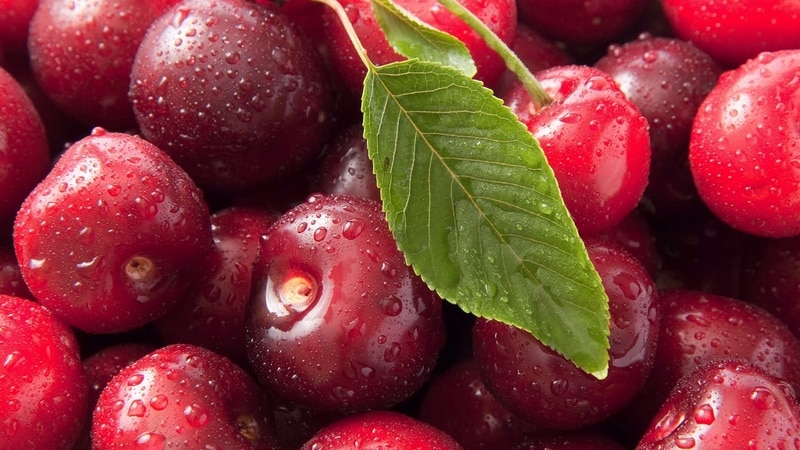
In memory of Astakhov
One of the best varieties for the middle zone. The tree can withstand frosts down to -30°C and is resistant to pests and diseases. The cherry is of medium size and begins to bear fruit at the age of 5-6 years. The harvest is harvested in mid-August. The berries are dark red, calibrated, weighing up to 8 g. The plant is self-sterile.
Staccato
The result of the work of Canadian breeders. The plant has increased winter hardiness, is not susceptible to most diseases, and is not damaged by pests. It begins to bear fruit 3 years after planting. It is the main variety for industrial use in Europe.
The fruits can withstand transportation and do not crack in cold, rainy summers. They ripen in early August and gain weight in up to 10 days. The berries are large, red, juicy.
Other options
Cherries differ not only in ripening time and geographical preferences, but also in the color and size of the fruit, the ability to self-pollinate, and the growth of trees.
Berry color
The most common and favorite varieties are those that have brightly colored berries (red, black, scarlet, pomegranate, burgundy). There are many lovers of yellow cherries, white or pink. Brightly colored fruits are juicier, larger and sweeter. They contain the maximum amount of vitamins and minerals.
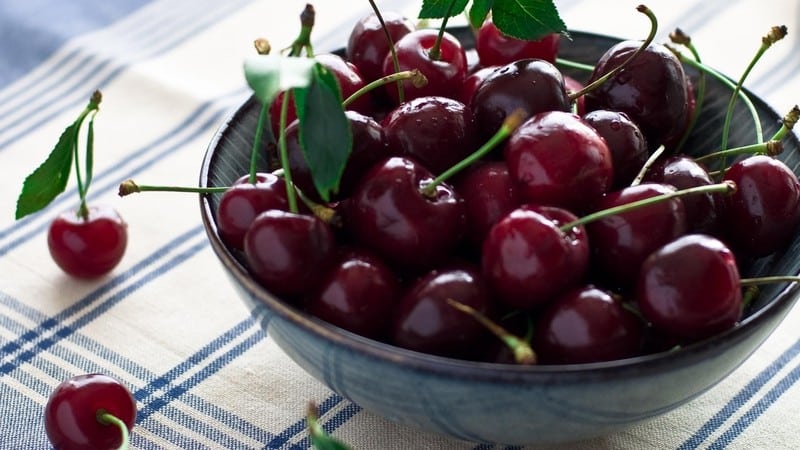
Medium and tall
Depending on the variety, cherries can be medium or tall. To facilitate the work of harvesting and not give the berries to the birds, the crown is formed in a timely manner. Proper pruning prevents the tree from stretching too much. If the requirements for shaping are met, the tree is not injured, but develops at a height accessible for maintenance.
Large-fruited
Cherry varieties differ in the size of the berries.The smallest ones weigh up to 4 g, medium ones - from 4 to 8, large ones - from 8 and above. Some specimens reach 20 g or even more.
Self-fertile and self-sterile
Most cherry varieties are self-sterile: they require other pollinators to bear fruit - without them, only 4% of flowers will be fertilized.
In partially self-fertile trees, fertilization from their own pollen occurs on average in 20% of flowers, so a high yield cannot be obtained without pollinators.
Quite rare self-fertile plants do not need pollinators, since they grow both male and female flowers. They produce about 50% berries.
Columnar
Relatively recently, breeders have bred cherries comparable to human height. This is convenient for care and harvesting. However, such trees do not live long: they are replaced every 4-5 years. The yield of columnar cherries is much lower than that of traditional varieties: no more than 15 kg per tree.
This is interesting:
What cherry tree care should include in the fall: guidance from experienced gardeners.
How to properly plant cherries in the fall: instructions for a novice gardener.
Rules for fertilizing cherries in the fall and selecting the best fertilizers for these purposes.
How to choose a variety
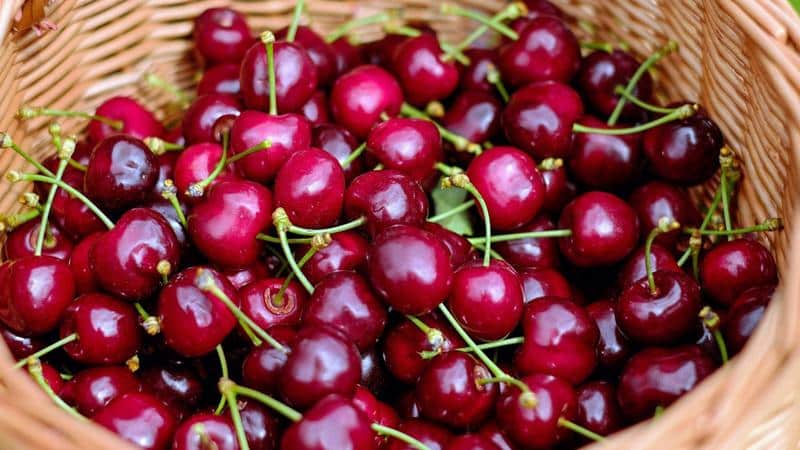
In order not to make a mistake when choosing and not to waste time, gardeners are guided by the successful experience of their neighbors. If you want to grow a variety that is new to your area, you carefully become familiar with its characteristics: requirements for soil, weather and climatic conditions, and the level of groundwater.
Advice! The center of the European part of Russia is characterized by mild winters, but stable winds. Most plants do not like drafts, and will have to be wrapped before they are fully rooted.
In addition to the varieties described above, Early pink and Daibera black are recommended for the Volga region, Samara, Penza, and Saratov regions.
Conclusion
Growing heat-loving cherries in the middle zone is not difficult. Thanks to the efforts of breeders, dozens of frost-resistant varieties have appeared. The choice is wide: there are early and late ripening, black, red, yellow, pink, tall, medium and low trees. The berries vary in size: from the smallest (4–6 g) to large-fruited (15–18 g). When choosing a variety, take into account its requirements for soil, climate and humidity.